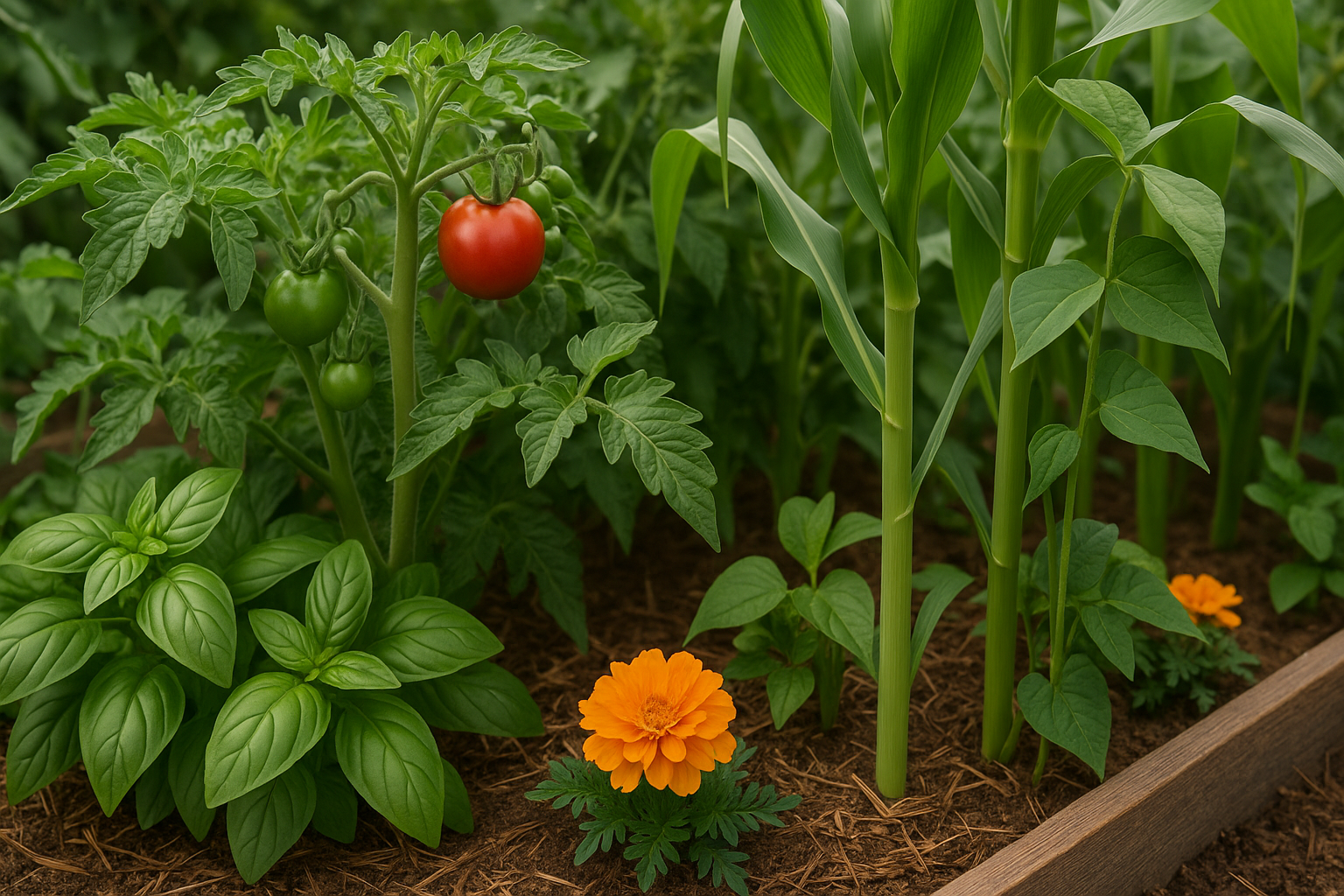Companion Planting Guide
Create a thriving, pest-resistant garden without chemicals

Nature's Perfect Pairings: The Smart Gardener's Guide
Companion planting is the gardener's secret weapon for a thriving, pest-resistant garden without chemicals. This strategic practice of growing compatible plants together creates natural partnerships that boost growth, deter pests, and attract beneficial insects.
Find Plant Companions
Search for a plant to see its companions
Select a Plant
Choose a plant from the list to see its companion planting information
How to Get Started with Companion Planting
- Start small: Convert one bed or a few containers to companion planting
- Observe and record: Keep notes on which combinations work best in your garden
- Plan for succession: As early crops finish, replace with compatible companions
- Embrace diversity: Aim for at least 3-5 different plant species per bed
- Patience with perennials: Some of the best companions (herbs, flowers) take time to establish
Raised Bed Strategies
- Border method: Plant pest-repelling and beneficial-attracting plants around the perimeter
- Alternating rows: Create rows of vegetables with companion plants in between
- Grid planting: Arrange plants in a grid pattern rather than traditional rows
- Polyculture blocks: Create diverse plant communities in blocks throughout the bed
- Plant tall crops on the north side to prevent shading
Container Garden Tips
- Use larger containers (minimum 12-18 inches) whenever possible
- Plant taller crops in the center of containers
- Position sun-loving companions on the south side
- Use cascading plants like nasturtiums and sweet alyssum at edges
- In containers, plants can be spaced 25-30% closer than in ground gardens
Remember: While companion planting offers numerous benefits, it works best as part of an integrated approach that includes proper spacing, watering, soil health, and good gardening practices. Avoid using broad-spectrum pesticides that kill beneficial insects, even organic ones. Be willing to tolerate some pest presence to maintain the balance of beneficial insects.